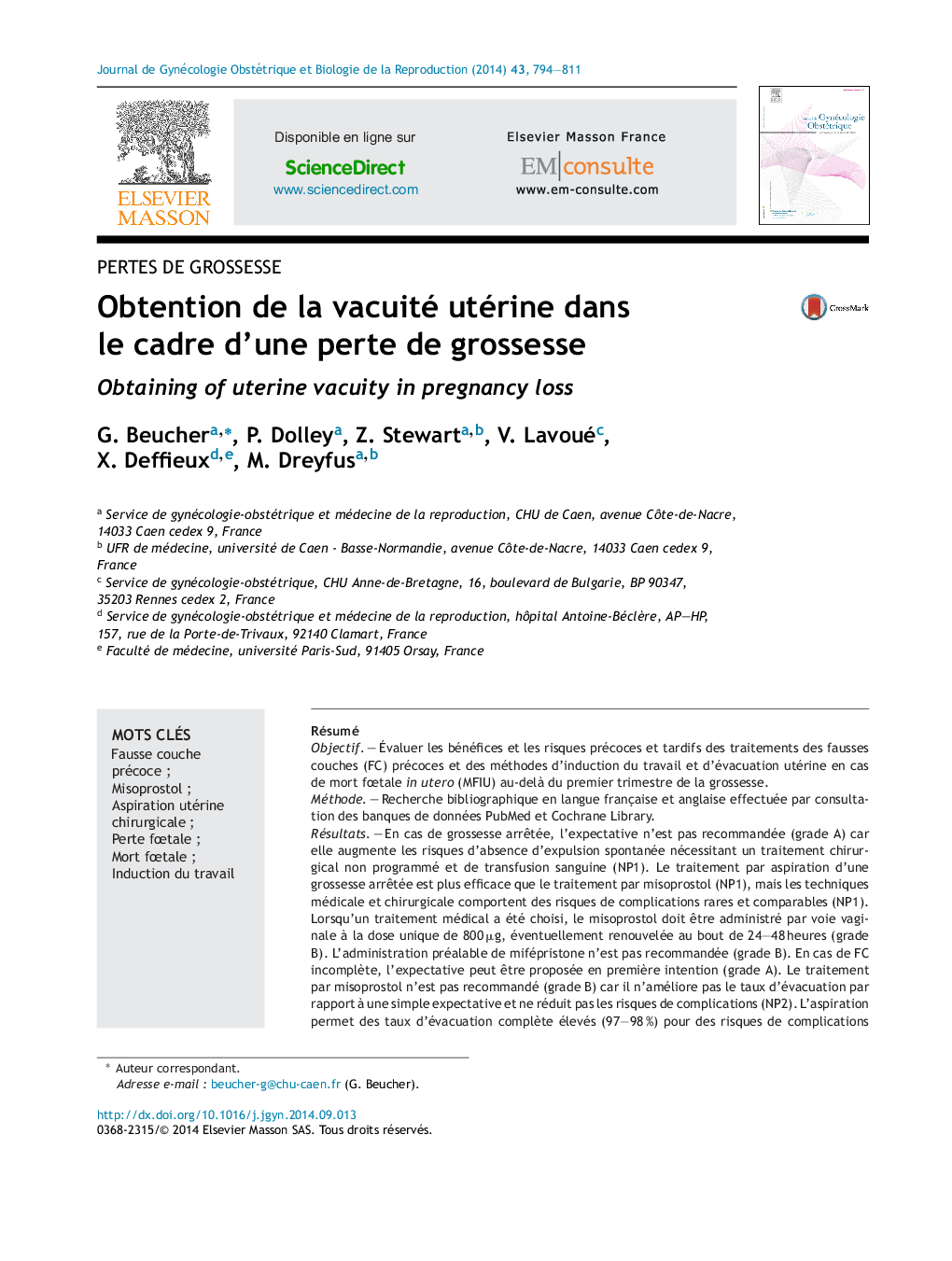| کد مقاله | کد نشریه | سال انتشار | مقاله انگلیسی | نسخه تمام متن |
|---|---|---|---|---|
| 3272333 | 1208333 | 2014 | 18 صفحه PDF | دانلود رایگان |
عنوان انگلیسی مقاله ISI
Obtention de la vacuité utérine dans le cadre d'une perte de grossesse
دانلود مقاله + سفارش ترجمه
دانلود مقاله ISI انگلیسی
رایگان برای ایرانیان
کلمات کلیدی
Early miscarriageMort fœtaleInduction du travailpregnancy loss - از دست دادن حاملگیPerte fœtale - از دست دادن وزن جنینFetal loss - از دست دادن وزن جنینLabor induction - القاء کارPregnancy termination - خاتمه بارداریEarly pregnancy failure - شکست بارداری در اوایلStillbirth - مردهزاییMisoprostol - میزوپروستول
موضوعات مرتبط
علوم پزشکی و سلامت
پزشکی و دندانپزشکی
غدد درون ریز، دیابت و متابولیسم
پیش نمایش صفحه اول مقاله

چکیده انگلیسی
Concerning missed miscarriage, expectant management is not recommended (LE1) because it increases the risk of failure, need of unplanned surgical procedure and blood transfusion (LE1). Surgical uterine evacuation remains more effective than medical treatment using misoprostol (LE1), but both techniques involve rare and comparable risks (EL1). When chosen, medical treatment should be a vaginal dose of 800 μg of misoprostol, possibly repeated 24 to 48 hours later (EL2). Administration of mifepristone prior to misoprostol is not recommended (EL2). In case of incomplete miscarriage, expectant management can be offered because it does not increase the risk of complications, neither haemorrhagic nor infectious (EL1). Medical treatment using misoprostol is not recommended (EL2) because it does not improve the evacuation rate when compared to our first option, and does not reduce the risk of complications (EL2). Surgical uterine evacuation leads to high evacuation rate (97-98%) and low risk of complications, haemorrhagic and infectious (< 5%) (EL1). However, this option should not be the only one because of the good efficiency of the expectant management (more than 75% of evacuation) and comparably low risk of complications (EL1). Surgical aspiration should be favoured to curettage because it is quicker, less painful and leads to less bleeding (EL2). After a first trimester miscarriage future fertility is identical with each treatment (EL2). When a trophoblastic retention is suspected, a diagnostic hysteroscopy is recommended (EL2). In case of late intrauterine foetal death beyond 14 weeks of gestation and without a past caesarean section, the most efficient protocol seems to be vaginal administration of misoprostol 200 to 400 μg every 4 to 6 hours (EL2). Twenty-four hours prior to misoprostol the administration of 200 mg of mifepristone is recommended (EL3) because it improves the induction-expulsion time and diminishes the quantity of needed misoprostol (and so the complications linked to it) (EL3).
ناشر
Database: Elsevier - ScienceDirect (ساینس دایرکت)
Journal: Journal de Gynécologie Obstétrique et Biologie de la Reproduction - Volume 43, Issue 10, December 2014, Pages 794-811
Journal: Journal de Gynécologie Obstétrique et Biologie de la Reproduction - Volume 43, Issue 10, December 2014, Pages 794-811
نویسندگان
G. Beucher, P. Dolley, Z. Stewart, V. Lavoué, X. Deffieux, M. Dreyfus,